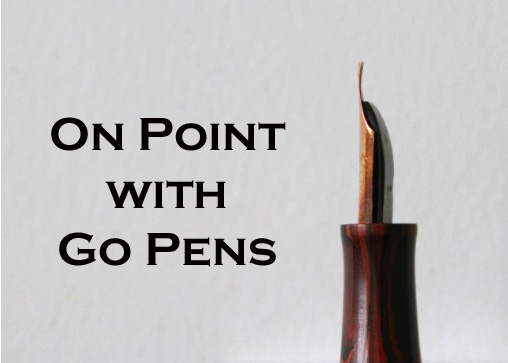
There are so many reasons to use fountain pens over ballpoint pens, isn’t there? For me, it feels more mindful because I have to pick the pen, nib, and ink, then the paper. Do you write?

If you ever find a few drops of ink in the cap of your piston-filling fountain pen after you have inked it, you have probably overfilled it. The combs of the feed hold ink, but that can leak into your cap, so once you have inked the pen, try turning the piston-turning knob to release one to three drops. That will clear the excess ink from your feed and combs, which should stop your pen …

What’s more important to you? Which do you prefer? I used to love pens more in my collecting days – the days where I would explore pens – because I would buy just about any pen. When I realized what kinds of pens I liked, it was easier to acquire inks. Now, it’s all about the nib for me. I like special, unique nibs, and nibs that blow me away.

Sometimes with use, a nib may lift off from the feed. This can happen if pressure is applied to the nib in excess of what it can tolerate. If you slide a piece of paper between the nib and feed and it slides in easily, there is too large a gap. This gap can prevent capillary action of the ink to the paper, and you may find your pen runs dry. Vintage pen feeds were …

My vintage pen cap has some holes in it. Does it need repairing? If they are small, clean holes, they were intentionally drilled into the cap to reduce condensation. They should not be blocked, but if they do become blocked by ink (or lint, for example), it can cause a vacuum to pull ink out when you uncap your pen.

There are five buttons you might see on vintage pens: plastic, top hat, twist, aluminum, and brass. Plastic and top hat buttons were used in cheaper pens. The twist button was used in Mabie Todd Swans and Blackbird pens. The aluminum button was found on postwar Victory and Duofold Parkers. However, the brass button was most popular. Button-fillers also required a button bar to operate – when the button was depressed, the bar would compress the …

What do the numbers and letters on my nib mean? It depends on the numbers, of course. Nibs are marked with their gold content, such as 14K/585, or 18K/750. Some modern nibs have 23K Pd for palladium (Visconti). Nibs without a gold indication are usually steel or gold-plated steel (sometimes marked as GKP/GP). Small letters such as F/M indicate the size of the nib: extra-fine, fine, medium, broad, double-broad, and triple-broad. Specialty nibs, such as those …

I started using fountain pens when I was in my early teens, but I really went crazy over them when I was in my early 20s. I thought it would be fun to write some quotes and hear what you think as well! I really enjoy this Faceted Capless model by Pilot, and wish they were still made today (in a variety of colors, especially). The fine nib is precise and crisp, and a pleasure …